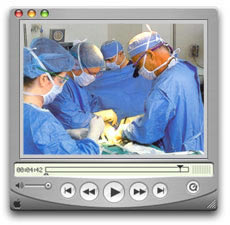Pathology Reports Before Tubal Ligation Reversal
At Chapel Hill Tubal Reversal Center, we want to maximize the chances for pregnancy after tubal ligation reversal for all of our patients. One step that is helpful in planning for a tubal reversal procedure is examining the pathology report from a patient’s medical record. Pathology reports can provide critical information to a tubal reversal specialist since they convey additional information beyond what is contained in the operative report describing the tubal ligation.
What is a pathology report?
A pathology report- sometimes shortened to ‘path report’- is a typed report from a pathologist (doctor who studies healthy and diseased tissue) that describes the removed tubal segments. Usually when tissue is removed by a surgical operation, it is sent to a pathologist for examination. After this examination, a pathologist will create a typed report describing what was observed.
When a tubal ligation and resection procedure has been performed, a segment of fallopian tube was removed and most likely sent to a pathologist. Therefore, a pathology report should exist in the patient’s medical record. When a sterilization has been performed by tubal electrocautery or with tubal clips or rings, there will not be a pathology report because no tubal tissue is removed with these tubal ligation methods.
A pathology report will help our tubal reversal doctors determine exactly what was done during a ligation and resection procedure and what your chances of tubal reversal success will be.
Examples of Pathology Reports After Tubal Ligation
Here are some examples of what the pathology reports may show after a tubal ligation and resection:
Scenario 1
Operative note states, “A standard ligation and resection was done.” Pathology report states, “Two 1.5 cm isthmic sections of fallopian tube were examined.” In this case, the pathology report confirms that small amounts of isthmic tubal segments were removed and the chance of successful ligation reversal is very good.
Scenario 2
Operative note states, “A bilateral ligation was done…tubes were resected.” Pathology report states, “Two 4 cm sections of fallopian tube were examined and fimbrial ends were present on both sections.” In this case, the pathology report demonstrates that the patient has had a fimbriectomy. We would advise the patient that fimbrectomy reversal will be the appropriate procedure to reverse this type of tubal ligation.
Scenario 3
Operative note states, “A typical bilateral tubal ligation was done.” Pathology report states, “Two 7 cm section of fallopian tubes were examined.” In this case, the pathology report shows that large amounts of tubal length were removed. This is not a typical bilateral tubal ligation, and the chance of a reversing tubal ligation is remote. In this case, we would advise the patient that IVF would be a better treatment option for her than tubal reversal surgery.
Get Expert Opinion
As tubal reversal experts who specialize in ‘untying tied tubes’, we have found that most tubal ligations are reversible. Any patient considering ligation reversal should send us a copy of their operative reportand, if ligation and resection was done, a copy of the pathology report. We will review these reports, without charge, and provide the best recommendation for becoming pregnant after tubal ligation.
Submitted by Dr. Charles Monteith
Chapel Hill Tubal Reversal Center


No comments:
Post a Comment